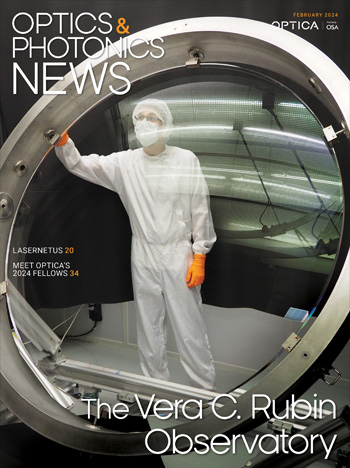
August 1999 Issue
Feature Articles
The Advantages of Plastic Optical Components
Compared to glass, plastic optical components offer numerous advantages to manufacturers, including reductions in cost and weight and greater flexibility in component design. These components are increasingly being used in automotive applications and other consumer technologies.
by J.P. Menendez, F. Erismann, M.A. GauvinUSING SOFTWARE to Reduce Lightpipe Design Costs
Unseen and unheralded, lightpipes work efficiently and quietly to help illuminate a variety of items used by many people on a daily basis. Formerly difficult and expensive to design, new software reduces both the cost and development difficulties of lightpipes.
by Michael GauvinExtreme Ultraviolet Lithography
Sweeney and Stulen discuss an optical approach to microlithography used in high volume integrated circuit manufacturing, based on extreme UV radiation, and using a laser produced plasma source of radiation, a reflective mask, and a 4x reduction all-reflective imaging system.
by Richard H. Stulen, Donald W. SweeneyAutomotive Exterior Lighting from Filaments to Lasers
The evolation of optics for automobiles continues to be driven by the need for energy efficiency, automobile styling, and the introduction of new power technologies. Future optics innovations may include laser and holographic technologies.
by Jeffrey T. Remillard, Michael A. Marinelli, and Timothy FohlDiffraction Gratings: Part 2
Last month we began in this column a discussion of diffraction gratings. We continue this month by covering reciprocity, the resolving power, Littrow mount, blazed gratings, and dielectric-coated transmission gratings. Please note that some of the figures and references discussed in July are cited here. You will need to refer back to the July issue, pages 42-46, as the figure and reference numbering scheme continues here.
by Masud Mansuripur, Lifeng Li, Wei-Hung YehLow-Distortion Fingerprint Detection System
One very interesting area is fingerprint detection, which up to now has been almost exclusively the domain of law enforcement, but which has the potential to be used in optically based replacements for conventional locks and keys. An "optical lock" would consist of a lens system to form an image of a fingerprint on a video camera sensor, and a small computer that would analyze the image to determine whether the owner of the fingerprint is allowed to open the lock. People who routinely spend time searching for lost keys but nevertheless manage to keep track of their thumbs will immediately appreciate the benefits of such a system
by J. Brian Caldwell
![A multiplexed image of a human tonsil acquired. [NIAID] using the iterative bleaching extends multiplexity (IBEX) method.](https://opnmedia.blob.core.windows.net/$web/opn/media/images/articles/2024/0424/departments/202404-cover-web.jpg?ext=.jpg)

